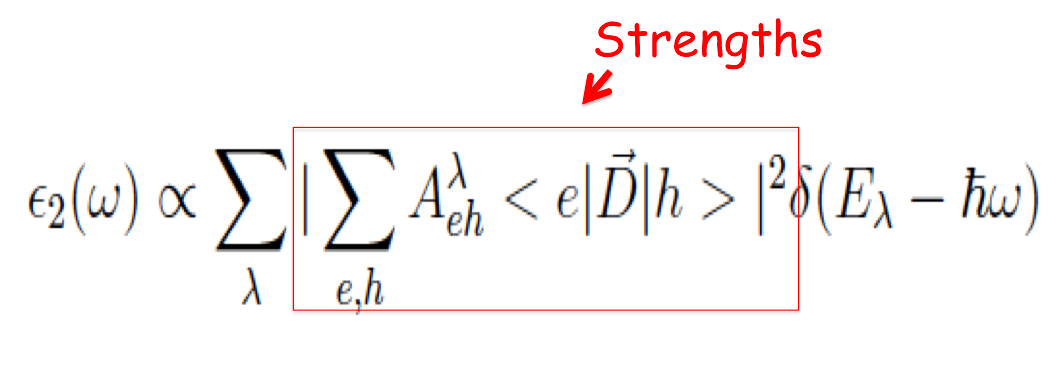First of all, thank you for your help in the previous topic
Actually, we are very interested in the formulas I mentioned in these two topic, and I am trying to understand the the physics behind these parameters. This is also the reason why I am asking these questions.
Allow me to share my understanding, if you don’t mind.
(1) with
Code: Select all
ypp -e a -b 1 -F ypp_nodipoles.in
It represents the weights (contributions) at each K-points for a specified excitonic state.
(2) with
Code: Select all
ypp -e a -b 1 -d exc -F ypp_withdipoles.in
In which <e|D|h> is optical matrix elements (‘dipoles’), and the value of dipoles determines whether excitons are bright or dark.
(3) Considering this equation, I speculate that Aeh should have a similar form to dipole (but as you mentioned, it should be a scalar). We are curious if it’s possible to use Yambopy to read Aeh over the entire Brillouin zone.
Or, Aeh is a real number, and I only need to take the square root of the amplitude in the o-amplitude?
Thanks again for your help
